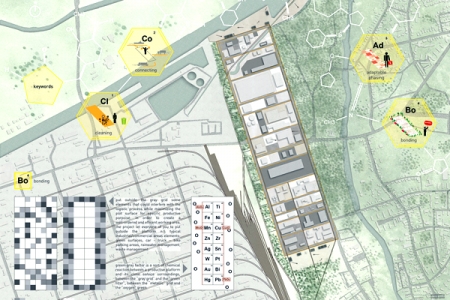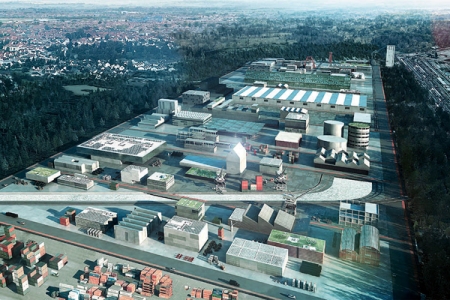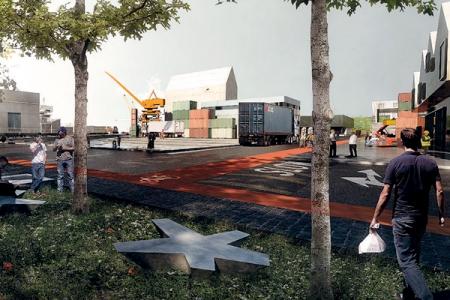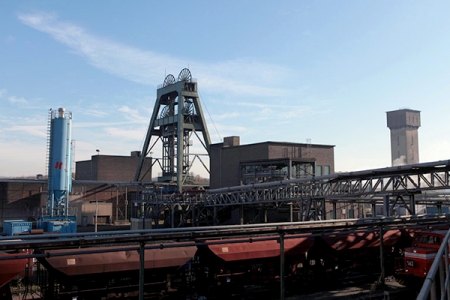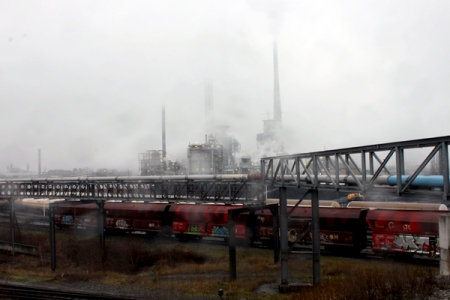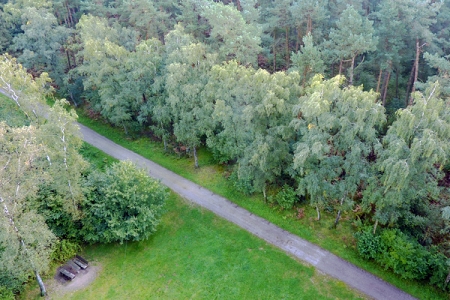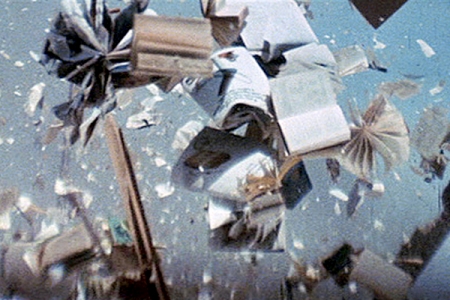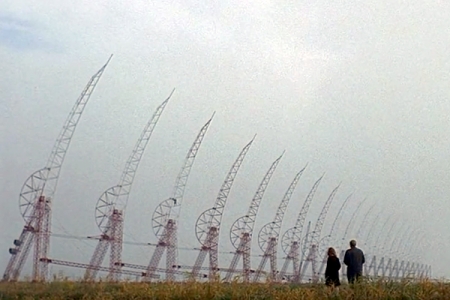GReen-GRay Factor
Marl (DE) – Mentionné
DONNÉES DE L’ÉQUIPE
Représentant d’équipe : Francesco Ceccarelli (IT) – architecte ; Associés : Davide Agostini (IT), Matteo Battistini (IT), Steve Camagni (IT), Alessio Valmori (IT) – architectes ; Sara Angelini (IT) – ingénieur- architecte
Collaboratrice : Giulia Dall’Agata (IT) – architecte d’interieur
laprimastanza_architetti & de Gayardon Bureau – www.laprimastanza.com – www.degayardonbureau.com
Voir la liste complète des portraits ici
Voir la page du site ici

M. Battistini, D. Agostini, S. Camagni, F. Ceccarelli, S. Angelini, A. Valmori & G. Dall’Agata
INTERVIEW en anglais
Cliquer sur les images pour les agrandir
1. How did you form the team for the competition?
We do believe in sharing processes to reach a high quality, robust, sustainable and feasible output; this is the reason why both our architecture and landscape studios – laprimastanza and de Gayardon Bureau– joined together to form our E13 team.
2. How do you define the main issue of your project, and how did you answer on this session main topic: Adaptability through Self-Organization, Sharing and/or Project (Process)?
Our project is a process; and the process deals with a factor; we call it “the green-gray factor” – a series of phases, a set of steps to lead to any area self-organized metamorphosis. cleaning_connecting_phasing_bonding are the key words sensing the spirit of entrepreneurship.
3. How did this issue and the questions raised by the site mutation meet?
A mine, just about to shut down, was the perfect case-study to verify the feasibility of our G-G factor. The main goal is to attract market productive settlement demand while promoting an efficient, well-ordered and high quality working environment.
4. Have you treated this issue previously? What were the reference projects that inspired yours?
We do think that quality in architecture must necessarily deal with 3 main terms, or issues: aesthetic, function and economy. We always try to find the perfect balance between these issues in relationship with the specific context to achieve sustainable solutions.
The 3 captions hereafter are all taken from Michelangelo Antonioni movies
5. Today –at the era of economic crisis and sustainability– the urban-architectural project should reconsider its production method in time; how did you integrate this issue in your project?
Architecture, especially when dealing with urban scale issues, holds Time as one of its main ingredients. Working with time inevitably leads to a different approach from traditional top-down design methods. It requires a consistent shift from control to strategy. Therefore, dealing with time offers a great opportunity to go beyond static formalism, and embrace an architecture of process: it transforms projects into infrastructures to accommodate change.
6. Is it the first time you have been awarded a prize at Europan? How could this help you in your professional career?
We have been awarded an honorable mention at Europan 11 in Allerød (DK) and we were shortlisted for Europan 12 in Kaufbeuren (DE). Now Runner up for Europan 13 in Marl (DE). This is our best result ever but of course we will do our best to improve and reach the very top. We are very proud of these awards. Europan is a smart competition and helps our studios develop an international approach.
